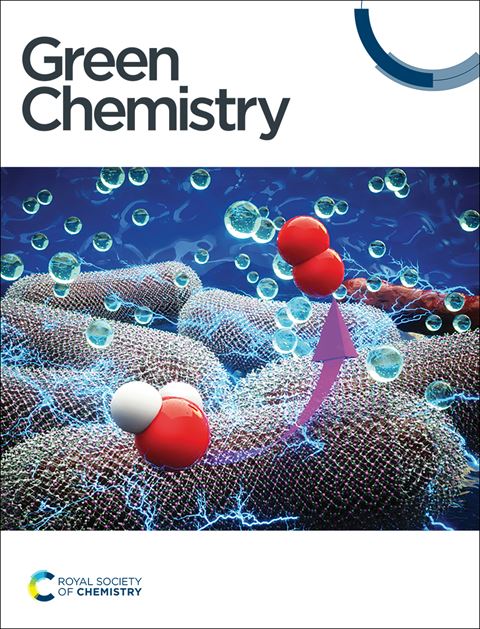二氧化碳光催化C(sp3) -H键羧化反应的研究进展:一种可持续的二氧化碳固定策略
IF 9.3
1区 化学
Q1 CHEMISTRY, MULTIDISCIPLINARY
引用次数: 0
摘要
二氧化碳(CO2)被公认为是一种可持续的C1合成物,用于生产各种羧酸衍生物,包括重要的天然和合成氨基酸。近年来,人们通过各种化学计量和催化方法成功地克服了CO2分子的惰性和高稳定性。其中,可见光诱导的光氧化还原催化已经成为一种流行和有效的方法,提供了更环保和更可持续的解决方案。利用合适的光催化剂,在可见光激发下成功地进行了C(sp3) -H、C(sp2) -H、C(sp) -H和Ar-X等羧基化反应。本文综述了近年来利用CO2在有机分子中通过光催化实现C(sp3) -H键功能化的羧基化反应的研究进展,包括有机光催化剂、均相光催化剂和非均相光催化剂,以及它们在(±)-氯吡格雷、(±)-替罗非班中间体和DL-DOPA等生物活性分子的开发中的应用。本文章由计算机程序翻译,如有差异,请以英文原文为准。

Advances in photocatalytic carboxylation of C(sp3)–H bonds with CO2: a sustainable strategy for CO2 fixation
Carbon dioxide (CO2) is well recognized as a sustainable C1 synthon for producing a variety of carboxylic acid derivatives, including important natural and synthetic amino acids. In recent years, the inertness and high stability of the CO2 molecule have been successfully overcome through various stoichiometric and catalytic methods. Among these, visible-light-induced photoredox catalysis has emerged as a popular and effective approach, offering a greener and more sustainable solution. Various carboxylation reactions involving C(sp3)–H, C(sp2)–H, C(sp)–H, and Ar–X have been successfully developed by using a suitable photocatalyst under visible light excitation. In this mini review, we explore recent progress in carboxylation reactions through the functionalization of C(sp3)–H bonds specifically in various organic molecules using molecular CO2 through photocatalysis including organo-photocatalysts, homogeneous photocatalysts and heterogeneous photocatalysts along with their application in the development of bioactive molecules such as (±)-clopidogrel, (±)-tirofiban intermediate and dl-DOPA.
求助全文
通过发布文献求助,成功后即可免费获取论文全文。
去求助
来源期刊

Green Chemistry
化学-化学综合
CiteScore
16.10
自引率
7.10%
发文量
677
审稿时长
1.4 months
期刊介绍:
Green Chemistry is a journal that provides a unique forum for the publication of innovative research on the development of alternative green and sustainable technologies. The scope of Green Chemistry is based on the definition proposed by Anastas and Warner (Green Chemistry: Theory and Practice, P T Anastas and J C Warner, Oxford University Press, Oxford, 1998), which defines green chemistry as the utilisation of a set of principles that reduces or eliminates the use or generation of hazardous substances in the design, manufacture and application of chemical products. Green Chemistry aims to reduce the environmental impact of the chemical enterprise by developing a technology base that is inherently non-toxic to living things and the environment. The journal welcomes submissions on all aspects of research relating to this endeavor and publishes original and significant cutting-edge research that is likely to be of wide general appeal. For a work to be published, it must present a significant advance in green chemistry, including a comparison with existing methods and a demonstration of advantages over those methods.
 求助内容:
求助内容: 应助结果提醒方式:
应助结果提醒方式:


